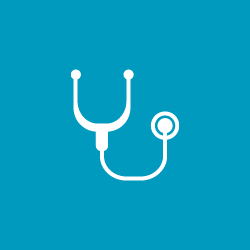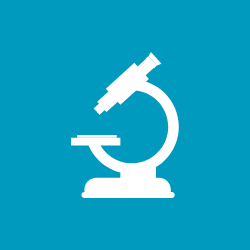To ensure a coordinated action in creating the widest collaboration among pediatric and adult metabolic physicians and patient associations at EU level, MetabERN will facilitate and harmonize patients’ access to diagnosis and best treatment by fulfilling and improving the following transversal activities:
TRANSVERSAL ACTIVITIES
The implementation of newborn screening programmes indicates that early diagnosis and immediate start of today available treatments can improve the health outcome and prevent severe health burden of affected individuals. However, less than 5% of known IMDs are currently included in newborn screening programmes in Europe, and there is a need to harmonise national programmes. MetabERN aims to harmonise diagnosis, prevention, screening, and treatment of IMDs across Europe and interact with pertinent stakeholders to facilitate early detection and prevention services (screening and genetic tests).
MetabERN collaborates with patient organisations to improve the safety and quality of care. The production of guidelines and clinical pathway will further enhance the diagnostic and treatment abilities of medical centres.
The development of easy-to-access electronic platforms and the dissemination of pocket-book guides will allow for standardisation of care and growing awareness of IMDs.
More than 1400 inherited metabolic diseases (IMDs) have been identified so far. Each IMD is a rare condition, but IMDs are collectively affecting at least one in 500 newborns. Clinical presentation of IMDs is wide-ranging from the involvement of single organ systems to multi-systemic disease, confronting patients with significant and often severe health problems resulting in high morbidity, reduced life expectancy, and low quality of life. Despite progressive awareness of metabolic diseases due to the offer of innovative therapies and the possibility of early diagnosis, natural histories are scarce for most IMDs.
Following the call for applications for rare diseases (3rd Public Health Programme) in support of the setup of new registries, we are proud to announce that proposal to create the Unified Registry for Inherited Metabolic Disorders (U-IMD) has been approved by the EU.
The primary objective of this project is to establish the first unified European registry that encompasses all inherited metabolic disorders (IMDs) as listed by Orphanet. This project aims to promote health for children, adolescents, and adults affected by rare IMDs and reduce variation between countries. Furthermore, to enable and empower patients, wherever they live, to access the necessary expertise and services and promote research on IMDs and develop safe and efficacious new treatments. The U-IMD will systematically collect data of affected individuals with an IMD of an unidentified molecular origin and group them according to their clinical and biochemical phenotype. This will help identify and systematically treat and follow these patients once the aetiology of their disease has been clarified. This will also allow us to understand the epidemiology of many IMDs better.
The Network, in collaboration with partners, organises continuous education, training, and development activities.
MetabERN takes advantage of the established collaboration with the SSIEM for its educational program.
The SSIEM Academy has an ongoing education and training programme, which will be elaborated on and adjusted for the needs of the MetabERN participants.
One of the significant aims of MetabERN is the development of cross-border care pathways and the facilitation of the virtual exchange of patient and treatment information across the network through the use of the CPMS.
The network will, in fact, systematically gather input from its members and partnering patient groups to identify where highly specialised services are located and can be leveraged.
Virtual Counselling is instrumental in ensuring patients access to expertise relevant to their particular condition and help them receive the best advice locally.
In the case of need, patients will receive care in the most specialised
centre of the network.
Visit the Clinical Patient Management System page for more information.
By pooling knowledge and improving information exchange between centres, MetabERN also aims to transfer knowledge in Member States where there is an insufficient number of patients and/or lack of knowledge to ensure highly specialised care to patients affected by IMDs and advance innovation in medical science and health technologies in this area. MetabERN will be entirely patient and expert-led.
Through the combination of patient experience and expert knowledge from across the EU, it will be able to capture the most innovative medical advances and tailor them to the patient needs.
Through different web-based and communication tools MetabERN disseminates information on new and on-going research projects and, if applicable, clinical trials to enable provider participation and patient recruitment across the EU. Through different web-based and communication tools, MetabERN disseminates information on new and ongoing research projects and, if applicable, clinical trials to enable provider participation and patient recruitment across the EU.
MetabERN acts as a source of information for rare or low prevalence and complex diseases for patients and families MetabERN will create capacity among patient groups through dedicated capacity-building activities and contribute to their empowerment by systematically involving them in the decision-making process.
MetabERN aims to act as a reliable and all-encompassing source of information to patients. Epidemiological studies involving patient associations will be conducted to identify the actual prevalence and incidence of IMDs and patient needs in this area.
MetabERN will work transparently with its members, collaborating patient associations, and other stakeholders such as industry, research institutions, pan-European infrastructures, policy-makers, and government, to identify research gaps and needs and set its priorities accordingly.
 Copyright ©2017-2021 all rights reserved
Copyright ©2017-2021 all rights reserved 









